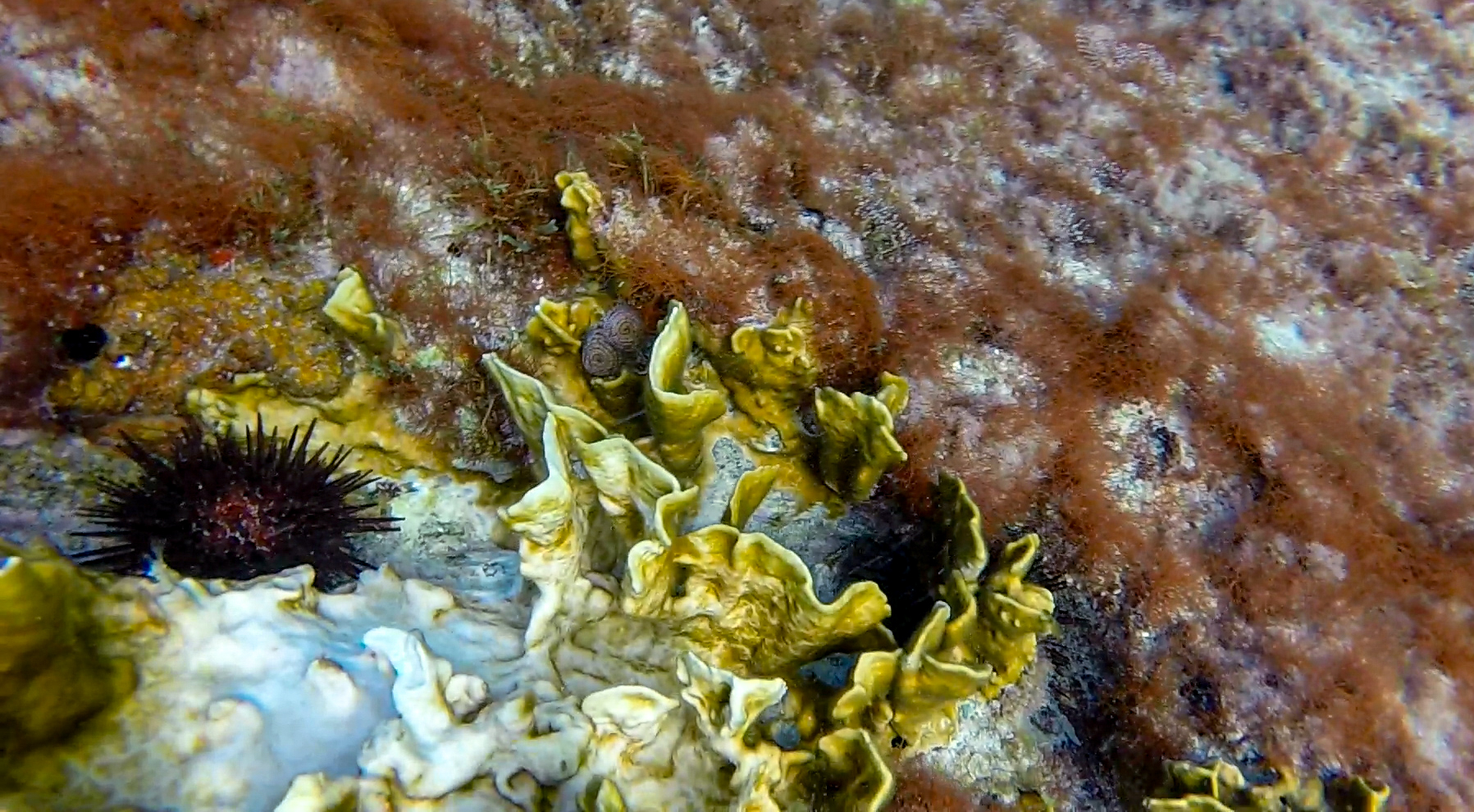Coral bleaching follows record summer heat
[ad_1]
Across the territory in recent weeks, reefs have been turning white.
The record high temperatures this summer created conditions for what will likely be the most devastating coral bleaching event in the Caribbean in nearly two decades.
Now, as tourism season begins to peak in the Virgin Islands, the reefs are showing what happens when the water becomes too hot to bear.
“The last major bleaching event we had was in 2005,” Association of Reef Keepers Managing Director Dr. Shannon Gore said. “We’re currently kind of in the middle of another one.”
Three months ago, Dr. Gore raised concerns that VI corals could be facing their most significant bleaching event since 2005 based on temperature trends observed in Florida.
History
“We knew it was going to happen in early July because the water temperatures in Florida were already just off the charts,” Dr. Gore said. “There’s a lot of the organisations that are growing coral — they literally lost everything because the water temperatures were so high, and then it just slowly started coming down this way. By September, people were starting to complain, like, ‘Wow, the corals are white.’”
Dive operators have noticed the effects as well.
“People come all this way to see the reefs and the fish that live in them,” said Lucie Mobbs at We Be Divin’ in Village Cay. “In the past week, there have been signs of improvement, but the current state is very sad.”
Many threats
No matter how bad this year’s event turns out, however, the die-off is unlikely to equal 2005’s — simply because there’s not that much coral left alive, according to Dr. Gore.
Though scant data on the territory’s reefs exists, Dr. Gore explained by way of example that if 60 percent of the coral was killed in 2005, that would leave only 40 percent.
“Let’s say maybe there’s like a five percent recovery, so you’ve got 45 percent live coral,” Dr. Gore said. “Next, you have Stony Coral Tissue Loss Disease, you lose half those corals. So now you’re down to 22 and a half percent live coral coverage. And then you get bleaching.”

Why coral die
The overall bleaching event might appear less dramatic than the one of 18 years ago, but it remains an indicator of what’s to come, according to Dr. Gore.
“This time around, you just have such fewer live coral coverage that it doesn’t quite seem as dramatic, but it is very eye-opening,” Dr. Gore said. “And it’s very, very sad.”
Coral turns white after the water gets too warm for it to handle and causes it to expel algae called zooxanthellae (zoo-zan-theh-lee).
Algae and coral form a symbiotic relationship: Coral protects the algae, and the algae feed the coral.
“If it stays too warm, that zooxanthellae is never going to come back, and that tissue will just die because the coral needs food,” Dr. Gore said. “And if it doesn’t get any food over time, just like us, [it’s] just going to fade away.”
Different coral species can tolerate different temperatures, so not all bleaching events necessarily affect every part of a reef.
But this year, Dr. Gore said, coral has been so widely affected that large white patches are visible from shore in many areas.
Though zooxanthellae sometimes return to corals after being forced out, corals typically survive no more than a week without their algal counterparts, according to the biologist.
“If the water temperatures start to cool, the zooxanthellae could come back,” she said. “I’ve seen corals that start to pale and then, after time, the water temperatures kind of cooled down [and] the corals [became] healthy again.”
Dr. Gore added that water temperatures seem to be dropping around the VI, but it’s hard to say for certain as no consistent data is being recorded.
Even if it were possible to artificially change the water’s temperature, she explained, the stress created by that process would probably kill off the rest of the coral.
Therefore, she said, efforts to protect reefs should focus on other factors that contribute to coral die-off.
To that end, she recommended engineering proper drainage and taking other steps to limit runoff carrying soil and other material into the oceans.
Such runoff can smother coral trying to rebound, making it more difficult for zooxanthellae to return to the calcium carbonate structure, Dr. Gore explained.
She also denounced the practices of anchoring boats on reefs and dumping raw sewage into the ocean.
“We can’t change the water temperature, but all the stress that we put on corals can be changed,” Dr. Gore said. “I’ve been here over 22 years, and I’ve seen a drastic, very dramatic change in the marine environment.”
[ad_2]
Source link


